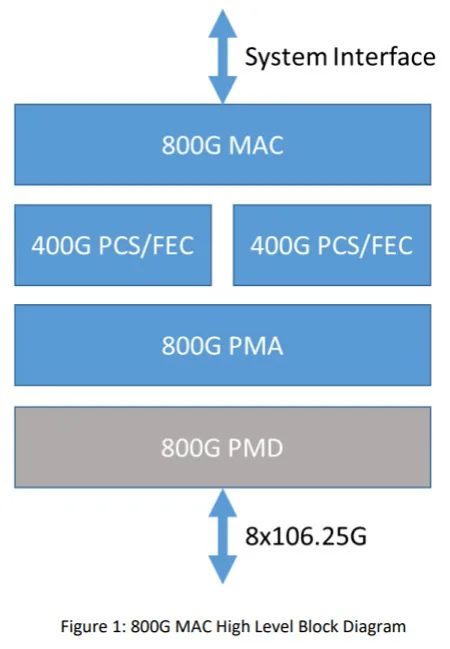
Few of us will be able to enjoy the privilege, but the Ethernet Technology Consortium (ETC) – which counts Arista, Broadcom, Cisco, Dell, Google, Mellanox, and Microsoft as members – has made its new 800 Gigabit Ethernet specification official. This is a massive leap from the 25 and 50 Gigabit speeds that the organization was originally founded to develop and manage (the ETC was originally known as the 25 Gigabit Ethernet Consortium, but it had to change its name due to ever-increasing speed ceilings).
“Ethernet is evolving very quickly and as a group, we felt that having 25G in the name was too constraining for the scope of the consortium,” said Brad Booth, chair of the Ethernet Technology Consortium. “We wanted to open that up so that the industry could have an organization that could enhance Ethernet specifications for new and developing markets.”
“800Gb/s Ethernet technology is designed as an interface that uses eight 106 Gb/s lanes using a 2xClause 119 PCSs (400G) to connect a single MAC operating at 800 Gb/s (though the 400G PCSs are modified, this is just a very high level conceptual view),” reads an overview of the specification, which is available in full here. “The following figure shows the high level architecture. Note that at least for now, we are not defining an 800G PMD in this specification. 2x400G PMDs could be used to form an 800G interface, for instance 2x400GBASEDR4 modules, though skew needs to be managed to be within the specification. This architecture could support 8×106.25G, 16×53.125G or even slower interfaces, but the 8×106.25G is the main focus.”

The specification also mentions that the IEEE 802.3 standard for 400 Gb/s “employs multi-lane distribution (MLD) to distribute data from a single Media Access Control (MAC) channel across 16 PCS lanes. This 800G standard will use a MAC scaled up to 800 Gb/s along with two 400Gb/s PCSs (with a few modifications) in order to drive 8x100G lanes. There will be a total of 32 PCS lanes (2×16 from the 400G standard), all with RS(544,514) FEC that is supported in the 400 Gb/s standard.”
